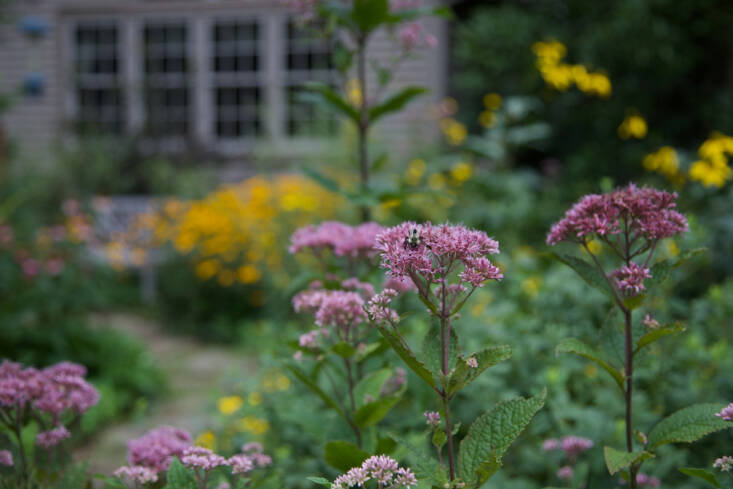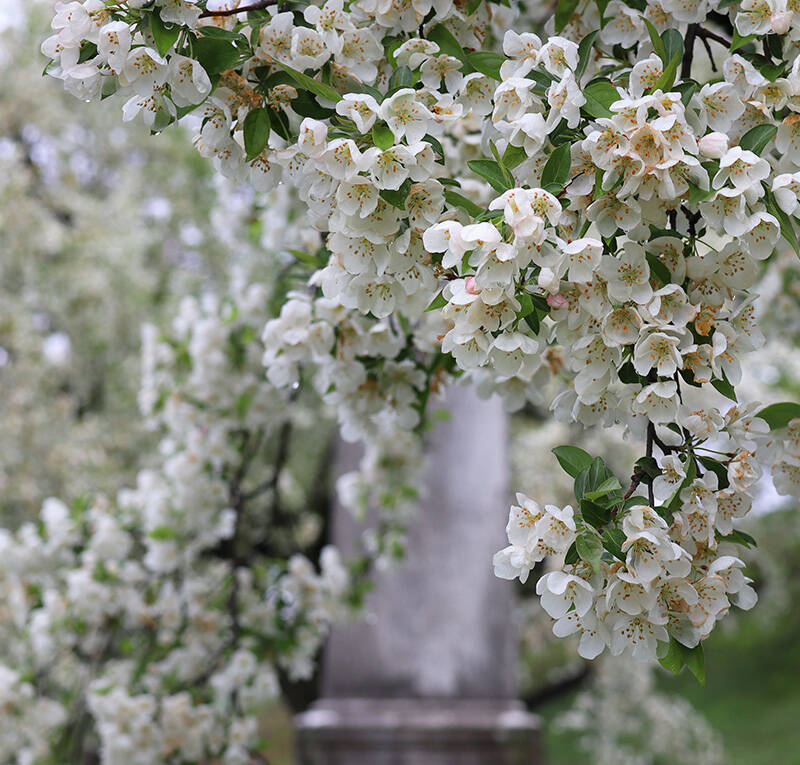For this last week of 2023, we’re republishing the year’s top-performing posts on Gardenista. Enjoy this crowd-pleaser, first published March 7, all over again.
Gardening is relaxing, joyous, and fulfilling. It is also work. And some of the more desirable flowers can be quite a bit of work. Roses, for example, while stunning, tend to be divas that can take up your time and resources, all in the service of keeping pests and diseases away. While you may love the blooms, do you also love the black spot, mildew, sawfly, and winter dieback?
Is it possible to have a beautiful garden with less work? Absolutely. While there are no pest- and disease-free plants, there are plants with easy-going natures; as long as their few needs are met, they will be more than fine. Below, five flowering plants that thrive on benign neglect.
Hellebores

Hellebores (Helleborus orientalis) are a really tough plant. They bloom in February and the simple five petal rose-like blossoms stay until May. The flowers range from pinks and purples to white and deep burgundy. Their leaves are thick and glossy and can survive hot summers and cold winters. And once established, they are moderately drought resistant. Furthermore, they are deer resistant and love shade! Beyond watering it the first year and during severe droughts, you don’t need to do anything for this plant.
Joe Pye Weed

Joe Pye weed (Eutrochium spp.), a native to North America and favorite plant of many pollinators, is very easy to grow. Give it a damp location and it’s happy. But it’s still happy in drier locations in the shade. There are several varieties that differ in heights—from three to four feet to up to eight feet tall. The flowers can be white, pink, mauve, purple, or dark purple and smell amazing. Once established, all you need to do is cut back the last year’s dead stems in the spring, but only if you feel like it.
Sneezeweed

Sneezeweed (Helenium autumnale) is in the Aster family and has yellow, daisy-like flowers that can look a bit like coneflowers, which are also in the same family. The native likes moist rich soil but will tolerate less than ideal conditions. You can trim back the plant in early June to encourage a fuller bloom of flowers, or not. In fact, all you really need to do is divide it every four years or so.
Bottle Gentian

Bottle gentian (Gentiana spp.) is not only a low-maintenance plant with few pests or diseases, it has beautiful purple bottle-shaped flowers in which bumblebees sometimes fall asleep! Bumblebees are the only insect that are strong enough to open the flowers to get at the nectar. And after working hard to get into the flower, they sometimes take a nap and leave their little bee bottoms sticking out.
Blazing Star

Blazing star (Liatris, spp.) is another native Aster family relative with few needs. While most varieties prefer moist rich soil, the plant can be quite content in average soil. With purple flower spikes that attract butterflies and bees, the plant may only require staking if you have one of the taller varieties.
You don’t have to give up your roses. But you can make your gardening life a bit easier by putting in a few low-maintenance plants to cut back your gardening chores.
See also:
- 5 Things a First-Time Gardener Needs for Spring
- Greatest Hits 2022: When Weeds Are Welcome—5 Wild Plants You Want in Your Garden
- Pollinator Gardens: 8 Easy Steps to Design a Landscape with Native Plants
N.B.: This post was first published March 7, 2023.












Have a Question or Comment About This Post?
Join the conversation (4)